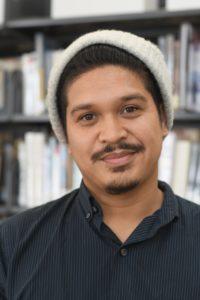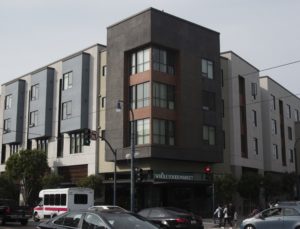Situated in a colorful, rainbow striped building on Sutter Street in San Francisco, Color Factory features works by various international artists in an interactive museum-like setting. Color Factory is the product of a collaboration between lifestyle blog, Oh Happy Day, and artists Leah Rosenberg and Erin Jang. Opened on August 1, 2017, originally as a one month pop up, Color Factory has been extended through mid November due to its popularity.
On the purpose of creating an experience centered around color, Creative Director Rosenberg remarks that “Color for me has just always been something that when I use it, it’s a way of me connecting to people and a place and getting stories out of people because we all have a connection to color in some way.”
Color Factory houses fifteen colorful pieces designed by a range of multidisciplinary international artists including Tom Stayte, Tosha Stimage, Jacob Dahlgren and Jessica Hirsche. Each installation meets the museum’s criterium: experiential, photogenic and conceptual, ultimately producing a multisensory experience. Color Factory features everything from a scratch and sniff wall to a life size Lite Brite toy to a confetti room— all in an impeccably designed space. Guests can also enjoy an entirely yellow gift shop and taste colorful treats from San Francisco eateries such as Chantal Guillon, Craftsman and Wolves, Doughbies and Garden Creamery, all served by yellow jumpsuit clad employees.
Color Factory has attracted many visitors by successfully playing into the social media craze. Color Factory offers guests ID cards that automatically email them photos from strategically placed cameras throughout the exhibit, endless photogenic backdrops and a lighting temperature designed to help create the perfect Instagram photo. Color Factory’s visitors extend beyond millennials hoping to explore a room filled with 10,000 rainbow ribbons or dive into a pit filled with 207,000 yellow balls; the pop up has also become a hub for artists and creatives.
Rosenberg stated, “It could seem frivolous if it’s just about the picture, but when you’re tasting a pink macaron in a room with pink it makes you think and remember things from your past; perhaps the moment brings up new memories.”
Rosenberg also remarked that, “There is really like a deeper connection and reason to move from one room to another, like from the spectrum room at the beginning of Color Factory into the black and white room is a sort of nod to film history, and moving from sepia or black and white into technicolor and what it does to your eyes is optically another thing.”
In an interview with Lonely Planet, Oh Happy Day founder Jordan Ferney remarked that “San Francisco has a great tradition and heritage around art and design. However, right now, San Francisco is filled with creative and diverse people who spend way too much time online. Color Factory is an invitation to have delightful, real world experiences.”
To help people enjoy the vibrancy of San Francisco outside the exhibit, Color Factory offers guests a map of seventeen curated, colorful experiences that range from a special pink drink from Boba Guys to a custom temporary tattoo at Moth & Daggar. The price of each experience varies — from free (street art) to more costly (renting a small disco venue).
Color Factory is approaching its closure, leaving people scrambling for last minute tickets. The now sold out time slotted tickets originally cost $32 for a roughly one hour experience. A few tickets are still available on Craigslist for up to $180 each, making the exhibit far from accessible for the majority of San Francisco residents. In contrast, general admission tickets for a full day at the SFMOMA cost $25 and individual SFMOMA and other major SF museum year long memberships cost $100. While releasing fewer, more expensive tickets allows guests to engage with the installations without hoards of people and for constant upkeep of interactive components, unlike other deliberately inclusive venues including SF museums, the San Francisco Zoo and California Academy of Sciences, Color Factory has not had a free family day and does not offer youth or senior rates.
While Color Factory is currently set to close in the middle of November, there is talk of a possible future iteration. Rosenberg stated, “We have definitely discussed like, what would it look like with other artists? What would it look like in another city? What would we do better? If this is all it is it was a good chapter but if there’s more I’m excited.”






